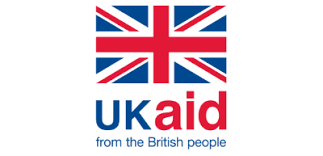
Issue 11 | August 25, 2020
Mitigating the Impact of the COVID-19 Pandemic on Uganda’s Economy: Vulnerability perspective
By Dr Susan Kavuma, Research Associate | @ACODE_Uganda
 The COVID-19 pandemic presents a twin problem of a health and economic shock. On the health front, the World Health Organisation (WHO) has indicated that older persons aged 60 years and above or persons with underlying health conditions such as lung or heart disease or diabetes or HIV/AIDS that affects their immune system are at a higher risk of dying when they contract the corona virus. Consequently, the WHO has advised that such categories of people require health interventions that can either boost their immune system or quickly deal with the pandemic. The immunity system can be enhanced through proper nutrition and drinking of sufficient water. Similarly, such categories of people should form the priority list for testing for COVID-19 to address the health condition before it gets worse.
The COVID-19 pandemic presents a twin problem of a health and economic shock. On the health front, the World Health Organisation (WHO) has indicated that older persons aged 60 years and above or persons with underlying health conditions such as lung or heart disease or diabetes or HIV/AIDS that affects their immune system are at a higher risk of dying when they contract the corona virus. Consequently, the WHO has advised that such categories of people require health interventions that can either boost their immune system or quickly deal with the pandemic. The immunity system can be enhanced through proper nutrition and drinking of sufficient water. Similarly, such categories of people should form the priority list for testing for COVID-19 to address the health condition before it gets worse.
On the economic front, the COVID-19 pandemic has manifested as a huge economic shock due to the containment measures that have been implemented worldwide to stop the spread of the coronavirus. These containment measures include; a ban on large gatherings, closure of non-essential services, closure of borders, hotels, schools, universities and other businesses activities that attract crowds. Consequently, at macro level, these measures have resulted into unprecedented contraction of the economy, hitting hard the services sectors such as tourism, trade, education and the hospitality industry. At micro level, in the initial weeks of the lockdown, it was evident that many households were failing to meet the basic necessitates of life such as food. This necessitated the provision of food to poor households particularly in urban areas. Therefore, whereas many attempts have been made to analyze and propose mitigation measures to reduce the impact of COVID19 pandemic in Uganda, attempts within the lens of vulnerability perspective are few.
The “vulnerability” perspective in awake of shocks or disasters is emerging as a dominant view to appreciate and understand what happens to the underprivileged population when shocks or disasters strike. The perspective emphasizes reducing vulnerability by increasing the ability of societies to adapt to the changes brought about by the shock through reducing exposure or increasing resilience.
Vulnerability context of Uganda
In Uganda, economically vulnerable groups comprise of poor households, workers in the lower tier of the informal sector, female headed households, persons with disabilities (PWDs) and geographically isolated communities who are bound to experience a greater impact of the COVID-19 pandemic on their livelihoods. A deeper analysis of the vulnerability situation in Uganda, reveals that about one third of Ugandans (equivalent to 10 million people1) live on less than US$1.90 a day and are considered vulnerable. The UNHS (2016/17), further notes that about 37% of households in Uganda experienced food poverty, with households in rural areas (40%) twice as more food poor as those found in urban areas (26%). Moreover, food poverty disparities are observed by region and sub-region. For instance, the Eastern region has a larger proportion of food poor households estimated at 51%, followed by the northern region at 43%. At a sub-region level, Karamoja sub-region has the highest number of food poor households (70%), followed by Bukedi sub-region (58%) and Busoga sub-region at 52%.
It is rather surprising that food poverty is higher in rural than urban areas, given that most of the agricultural activities take place in rural areas. The high prevalence of food poverty in rural areas is attributed to the two dimensions of accessibility to food – physical and economic access. Households in rural areas are susceptible to physical inaccessibility to food arising from crop failure brought on by supply-side constraints such as long spells of drought as well as crop and livestock diseases. On the other hand, households face economic inaccessibility to food as a result of the low returns to farming which reduces their purchasing power and ability to reinvest their capital. A national food assessment study conducted by the Office of the Prime Minister in 20172 revealed that female-headed, larger households and households engaged in agriculture are more likely to face high food insecurity rates.
Similarly, Uganda’s labour market constitutes a large proportion of vulnerable workers. According to the UNHS 2016/17, only 47% (9 out of 19 million people) of the working age population is in employment. The remaining 53% (about 10 million) of the working age population is either unemployed or in vulnerable employment that includes subsistence agriculture and own-account. These workers are vulnerable because they receive low earnings, have unstable employment terms and work under harsh (in reference to agriculture) and difficult environments. The levels of vulnerable workers have a spatial dimension, with the highest numbers reported in the West Nile sub-region (76.3%), followed by the Acholi sub-region (71%) and Central II region (68.8%).
In respect to firms, about 93% of non-farm enterprises in Uganda are Micro, Small and Medium enterprises that are spread across all sectors with the highest proportion observed in the services sector (49%), followed by trade and commerce (33%), manufacturing (10%) and other fields (8%). The categorization of enterprises is based on the enterprises’ number of employees or turnover (or asset portfolio). For instance, the Uganda Bureau of Statistics defines micro enterprises as firms employing less than 5 workers with an annual turnover or total asset value not exceeding UGX 10 million. The small enterprises employ between 5-50 workers with an annual turnover ranging between UGX 10 – 100 million, while medium enterprises employ between 50-100 workers with an annual turnover between UGX 100 - 360 million. Therefore, MSMEs are low capital ventures that are bound to face serious liquidity constraints if exposed to a huge economic shock such as the COVID-19 pandemic. A study by the United Nations Development Programme (UNDP) on the impact of COVID-19 on MSMEs in Uganda revealed that the enterprises are fragile. The study found that only 15% of the surveyed firms could sustain more than three months operations on their current cash flows3.
The above description of Uganda’s economy demonstrates that the impact of the pandemic is more devastating to these different categories of people in Uganda. The realization that we have groups of Ugandans who are vulnerable, and are facing extreme circumstances even before the consequences of pandemic itself is helpful in designing sustainable responses for these groups. The failure of government and other stakeholders to adequately plan and help these vulnerable groups will have far reaching consequences.
Conclusion and proposed solution
In view of the discussion above, Uganda has about 10 million people who are vulnerable either in reference to household economic status or labour market status. These Ugandans need special intervention from the Government of Uganda to increase their resilience to the negative impacts of the pandemic. A stimulus package is considered the best solution to increase vulnerable people's resilience. The ultimate aim should be to improve their purchasing power which will boost aggregate demand, required to sustain aggregate supply. There are concerns that the Government has emphasized stimulating aggregate supply through the recapitalization of Uganda Development Bank (UDB), Uganda Development Corporation (UDC), Micro-finance Support Centre which efforts may not benefit the most vulnerable firms and households. The announced economic stimulus does not intend to extend credit to micro enterprises, perhaps because of their level of informality. However, micro enterprises constitute the largest share of MSMEs and therefore play a significant role in Uganda’s economy. Excluding the micro enterprises from the economic stimulus may escalate the level of unemployment and crime rate in the country. Nonetheless, even the proposed demand side interventions during budget reading such as exemption of PAYE up to September do not directly benefit these groups of people because of their economic status.
Given the different forms of vulnerabilities in Uganda and the impact of the COVID-19 pandemic on Uganda’s economy, especially on the vulnerable households and workers it is the right time for Uganda to think of designing an inclusive social protection scheme. To date, Uganda has a non-inclusive social protection scheme targeting the elderly under the Senior Citizens Grant (SCG) which gives UGX 25,000 per month to persons aged 60 years in selected districts. The SCG has been very beneficial to target households. Studies that have analyzed its economic impact note that it is not entirely consumptive but many beneficiaries have invested the money in productive assets such as education (buying scholastic materials for pupils) and starting farming businesses4. Similarly, social protection extended to other vulnerable groups described above may not be entirely consumptive but may result in investments.
In conclusion, the Government of Uganda should think of social protection measures that can stimulate aggregate demand required to sustain increases in aggregate supply. This can be achieved either by designing interventions at household or labour market level. At household level, vulnerable families can obtain spending vouchers or cash transfers that can be spent in a specified period of time. For example, each household can receive monthly spending vouchers worth UGX 80,000 for a period of six months (July – December 2020). The proposed UGX 80,000 is 48% of the national median wage reported in the UNHS 2016/17. Alternatively, Government may intervene in the labour market by subsidizing workers’ salaries (offering the median wage of UGX 168,000) in the most affected sectors such as tourism, education and the hospitality industry to avoid the falling out of employment of such workers. Lastly, alternatively can stimulate aggregate demand using the tax policy for example a reduction in value added tax (VAT) rate from 18% to 10%.
1 Uganda Bureau of Statistics. (2018). Uganda National Household Survey 2016/17.
2Office of the Prime Minister. (2017). National Food Security Assessment.
3United Nations Development Programme. (April, 2020). Socio-economic Impact Assessment of Covid-19 in Uganda.
4UNU-MERIT Working Paper Series – 2017-029. Social Protection Investments, Human Capital and Income Growth: Simulating the Returns to Social Cash Transfer in Uganda.
|
|









+256 312 812 150 | Leave a comment | Center for Budget and Economic Governance
Subscribe To Our News Letter | Edit Subscription | Unsubscribe